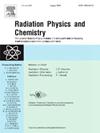测量聚四氟乙烯中的极低辐射剂量,用于核鉴识浓缩重建
IF 2.8
3区 物理与天体物理
Q3 CHEMISTRY, PHYSICAL
引用次数: 0
摘要
每个制造过核武器的国家都使用过铀浓缩技术。尽管这项技术是国际安全的核心,但在公开文献中仍没有可靠的过去浓缩的物理标记,可用于对气体离心机上历史上生产的武器进行法证验证。我们的研究表明,浓缩过程中铀α发射的放射性极低,会在常见的浓缩垫片材料聚四氟乙烯中留下可检测和不可逆的量热特征,从而可以重建过去浓缩活动的历史,其灵敏度优于一件武器的高浓缩铀数量。快速扫描量热法还能测量按顺序微切片的再结晶焓,从而确认辐照的程度和类型,同时还能检测篡改情况,并提供一种用于条约核查的现场样本分析方法。这项工作为将普通物品转化为精确剂量计打开了大门,从而可以高可信度地检测过去存在的放射性、核材料和相关活动。本文章由计算机程序翻译,如有差异,请以英文原文为准。
Measuring very low radiation doses in PTFE for nuclear forensic enrichment reconstruction
Every country that has made nuclear weapons has used uranium enrichment to do so. Despite the centrality of this technology to international security, there is still no reliable physical marker of past enrichment in the open literature that can be used to perform forensic verification of historically produced weapons on gas centrifuges. We show that the extremely low radioactivity from uranium alpha emissions during enrichment leaves detectable and irreversible calorimetric signatures in the common enrichment gasket material PTFE, allowing for historical reconstruction of past enrichment activities at a sensitivity better than one weapon's quantity of highly enriched uranium. Fast scanning calorimetry also enables the measurement of recrystallization enthalpies of sequentially microtomed slices, confirming the magnitude and the type of radiation exposure while also providing detection of tampering and a method for analyzing field samples useful for treaty verification. This work opens the door for common items to be turned into precise dosimeters to detect the past presence of radioactivity, nuclear materials, and related activities with high confidence.
求助全文
通过发布文献求助,成功后即可免费获取论文全文。
去求助
来源期刊

Radiation Physics and Chemistry
化学-核科学技术
CiteScore
5.60
自引率
17.20%
发文量
574
审稿时长
12 weeks
期刊介绍:
Radiation Physics and Chemistry is a multidisciplinary journal that provides a medium for publication of substantial and original papers, reviews, and short communications which focus on research and developments involving ionizing radiation in radiation physics, radiation chemistry and radiation processing.
The journal aims to publish papers with significance to an international audience, containing substantial novelty and scientific impact. The Editors reserve the rights to reject, with or without external review, papers that do not meet these criteria. This could include papers that are very similar to previous publications, only with changed target substrates, employed materials, analyzed sites and experimental methods, report results without presenting new insights and/or hypothesis testing, or do not focus on the radiation effects.
 求助内容:
求助内容: 应助结果提醒方式:
应助结果提醒方式:


